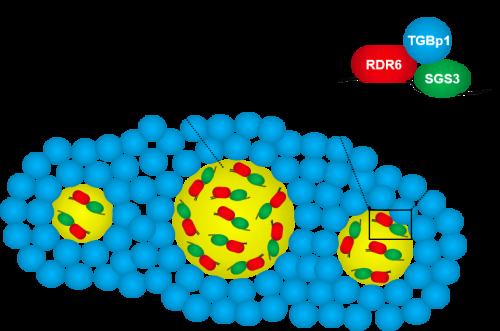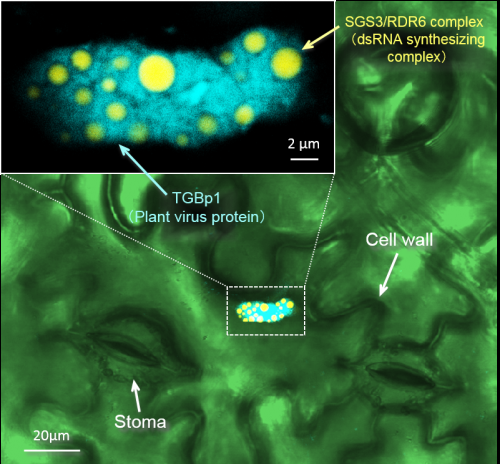Virus rounds up enzymes, disarms plant

University of Tokyo researchers have described how a plant-virus protein suppresses an important plant defense mechanism that remembers viral genetic information, providing a new target for developing the first-ever chemical against plant viruses that globally cause more than $60 billion of crop losses each year.
Invading viruses carry genetic material that hijacks the host cell's machinery, fooling it into producing proteins and new viruses. All cells from fungi to plants and mammals employ RNA silencing, a cellular process essential for the regulation of gene expression that also functions as an important defense mechanism. Through RNA silencing, plant cells recognize this viral genetic material, remember and copy it so that other cells in the organism can be warned and destroy the virus. Viruses are known to fight back with RNA silencing suppressors, proteins that inhibit this defense mechanism, but how they interfere with the recording of viral genetic information was unknown. Now, a research team headed by Professor Shigetou Namba and Dr. Yukari Okano in the Graduate School of Agricultural and Life Sciences has shown for the first time that the plant virus protein TGBp1 disarms RNA silencing by causing two enzymes involved in producing copies of viral genetic information to aggregate as inactive clusters in cells surrounded by the virus protein.
The two enzymes are SGS3 and RDR6, which are involved in producing copies of viral genetic information as double-stranded RNA, an essential step in the plant defense process. The researchers demonstrated that TGBp1 interacted with and inhibited the functions of SGS3 and RDR6, and attached fluorescent markers to TGBp1 and SGS3 to show visually that SGS3, which is usually distributed throughout the cell, formed clusters surrounded by TGBp1. These results suggest that TGBp1 causes the enzymes SGS3 and RDR6 to form clusters, impeding the formation of double-stranded RNA and inhibiting the recording of viral genetic information, thus reducing plant resistance to viral infection.

"We expected that recording viral genetic information would be the most important step in RNA silencing, because if you can't remember the virus, you can't warn the rest of the organism and stop it spreading," explains Professor Namba. "This would also make it important for the virus to target, but no one had confirmed any viral RNA silencing suppressors targeting this step in plants. Now we are very excited to be the first to do so, and we expect that other plant viral proteins will be found to have similar functions. Recently other researchers have reported that some viruses infecting humans also have RNA silencing suppressors, so this research may also contribute to the development of medicines targeting those viruses."
More information: Yukari Okano, Hiroko Senshu, Masayoshi Hashimoto, Yutaro Neriya, Osamu Netsu, Nami Minato, Tetsuya Yoshida, Kensaku Maejima, Kenro Oshima, Ken Komatsu, Yasuyuki Yamaji and Shigetou Namba, "In planta recognition of a dsRNA synthesis protein complex by a potexviral RNA silencing suppressor" The Plant Cell 26 (5) May 2014. DOI: 10.1105/tpc.113.120535
Journal information: Plant Cell
Provided by Tokyo University

















